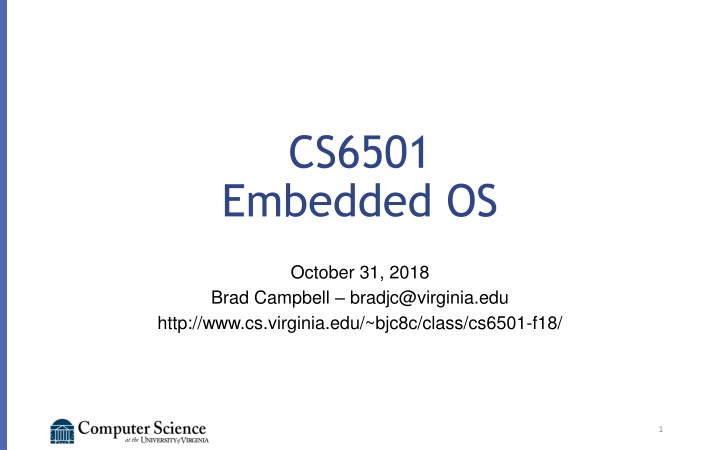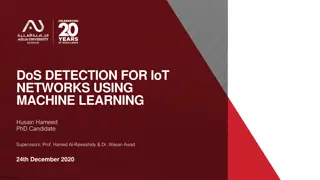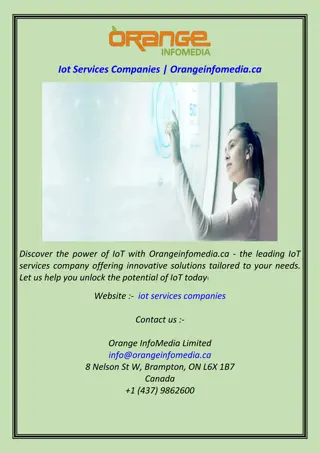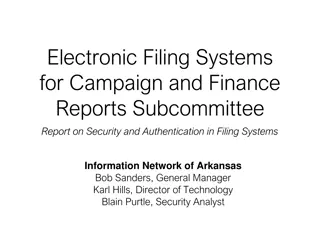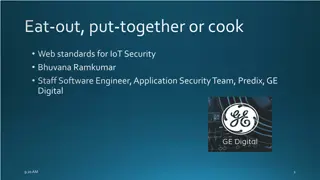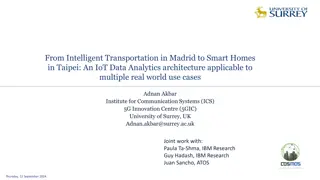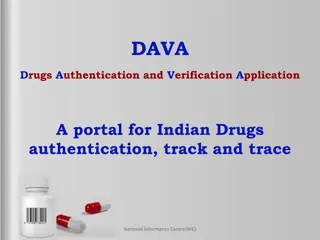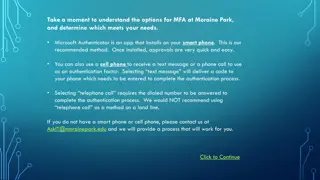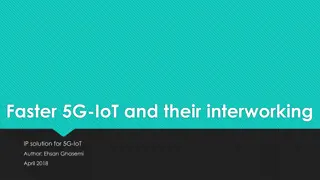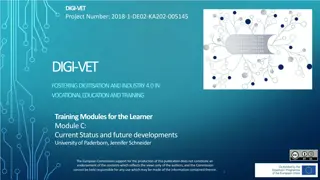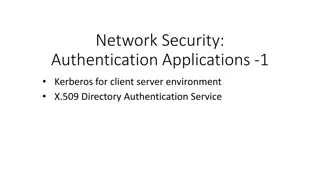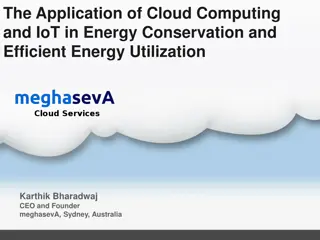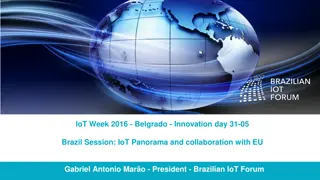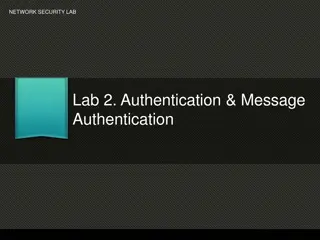Continuous Authentication in IoT Systems
Continuous authentication in Internet of Things (IoT) systems involves verifying user authenticity multiple times during a session using methods like keystroke-based recognition, face identification, mouse movement analysis, touch gesture authentication, and user behavior patterns. However, IoT poses challenges such as limited resources, energy, and bandwidth as well as a lack of traditional user interfaces. Various lightweight continuous authentication methods can be employed in IoT environments to address these challenges and enhance security.
Download Presentation

Please find below an Image/Link to download the presentation.
The content on the website is provided AS IS for your information and personal use only. It may not be sold, licensed, or shared on other websites without obtaining consent from the author.If you encounter any issues during the download, it is possible that the publisher has removed the file from their server.
You are allowed to download the files provided on this website for personal or commercial use, subject to the condition that they are used lawfully. All files are the property of their respective owners.
The content on the website is provided AS IS for your information and personal use only. It may not be sold, licensed, or shared on other websites without obtaining consent from the author.
E N D
Presentation Transcript
CS6501 Embedded OS October 31, 2018 Brad Campbell bradjc@virginia.edu http://www.cs.virginia.edu/~bjc8c/class/cs6501-f18/ 1
CFP Rankings (Oct 30) 1. 2. 3. 4. 5. 6. 7. 8. 9. 10. Ohio State (7-1) 11. Florida (6-2) 12. UCF (7-0) 13. West Virginia (6-1) Alabama (8-0) Clemson (8-0) LSU (7-1) Notre Dame (8-0) Michigan (7-1) Georgia (7-1) Oklahoma (7-1) Washington State (7-1) Kentucky (7-1) 14. Penn State (6-2) 15. Utah (6-2) 16. Iowa (6-2) 17. Texas (6-2) 18. Mississippi State (5-3) 19. Syracuse (6-2) 20. Texas A&M (5-3) 21. NC State (5-2) 22. Boston College (6-2) 23. Fresno State (7-1) 24. Iowa State (4-3) 25. Virginia (6-2) 2
Best Presentation Multiprogramming a 64 kB Computer Safely and Efficiently 4.33 Create Your Own Internet of Things 4.29 DeepASL: Enabling Ubiquitous and Non-Intrusive Word and Sentence-Level Sign Language Translation 4.25 Synthetic Sensors: Towards General-Purpose Sensing 4.22 TinyOS: An Operating System for Sensor Networks 4 3
Highest Chance of Impact Array of Things: A Scientific Research Instrument in the Public Way 3.77 DeepASL: Enabling Ubiquitous and Non-Intrusive Word and Sentence-Level Sign Language Translation 3.75 Sparsification and Separation of Deep Learning Layers for Constrained Resource Inference on Wearables TinyOS: An Operating System for Sensor Networks 3.75 3.71 Multiprogramming a 64 kB Computer Safely and Efficiently 3.5 4
Most Interested A Lightweight And Inexpensive In-ear Sensing System For Automatic Whole-night Sleep Stage Monitoring Create Your Own Internet of Things 3.89 3.86 DeepASL: Enabling Ubiquitous and Non-Intrusive Word and Sentence-Level Sign Language Translation 3.75 Array of Things: A Scientific Research Instrument in the Public Way Synthetic Sensors: Towards General-Purpose Sensing 3.44 3.44 5
Best Overall DeepASL: Enabling Ubiquitous and Non-Intrusive Word and Sentence-Level Sign Language Translation 4.5 TinyOS: An Operating System for Sensor Networks 4.14 A Lightweight And Inexpensive In-ear Sensing System For Automatic Whole-night Sleep Stage Monitoring 4 Synthetic Sensors: Towards General-Purpose Sensing 3.89 Sparsification and Separation of Deep Learning Layers for Constrained Resource Inference on Wearables 3.88 6
Confidence Create Your Own Internet of Things 2.86 Synthetic Sensors: Towards General-Purpose Sensing 2.78 A Lightweight And Inexpensive In-ear Sensing System For Automatic Whole-night Sleep Stage Monitoring 2.67 MotionSync: Personal Energy Analytics through Motion Tags and Wearable Sensing 2.56 Programming Models for Sensor Networks: A Survey 2.44 7
Project Overview 1-2 people Related to IoT & OS Timeline Proposal: Oct 1 Brief, one page, describe the project. Be sure to include: The problem it is solving How you will know it is working/done Hack Day: Oct 31 Presentations: December 3 & 5 Overview and demo (if applicable) Timing TBD 8
Option 1: IoT Demo: Deliverables (Due Dec 3) 1-2 page written overview of the project 1. The larger problem or challenge being addressed. 2. A description of the project. 3. The technical challenges that make this challenging. 4. What hardware and software platforms you used. 5. How the software platform / OS helped or didn t help with creating the project. Some demo of the project Ideally live in class. Video would work too. 10-15 minute presentation Answer: Why? Show the demo / video Connections to the OS concepts we discussed in class 9
Option 2: Research Paper: Deliverables (Due Dec 3) 6 page workshop-style paper In conference format (like the papers we have been reading) All the relevant sections, intro, related work, overview, design, eval, conclusion At least one or two experiments to justify the approach or claim May or may not require hardware 10-15 minute presentation Overview of the idea, and why Preliminary results Connections to embedded OS 10
